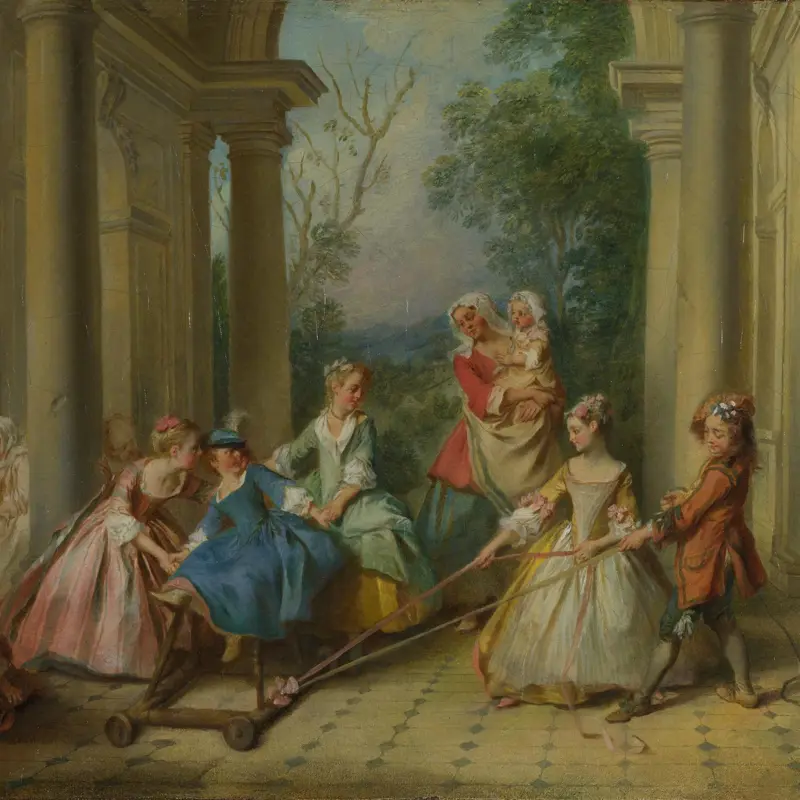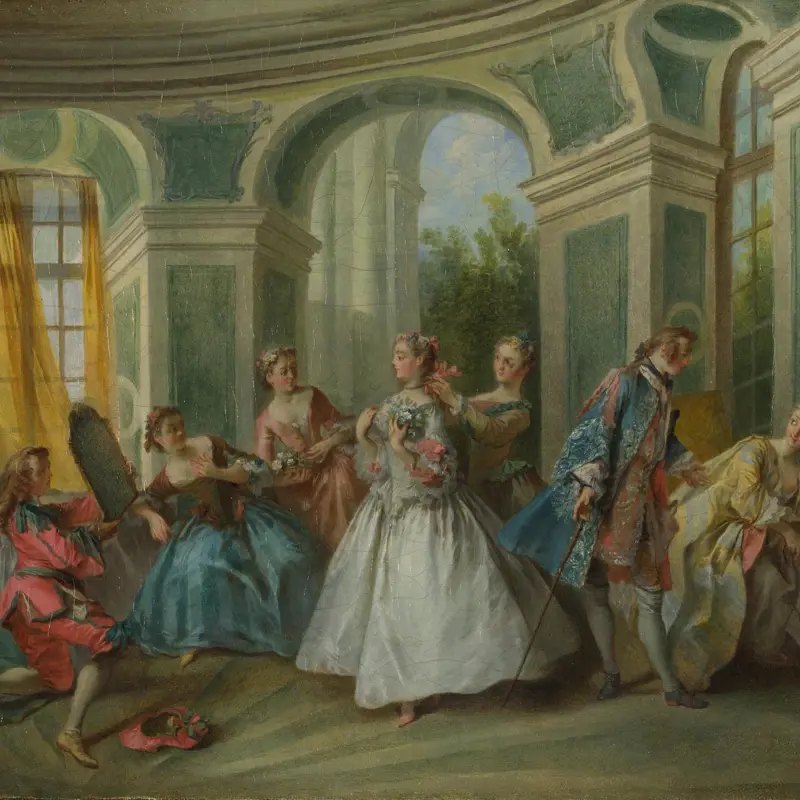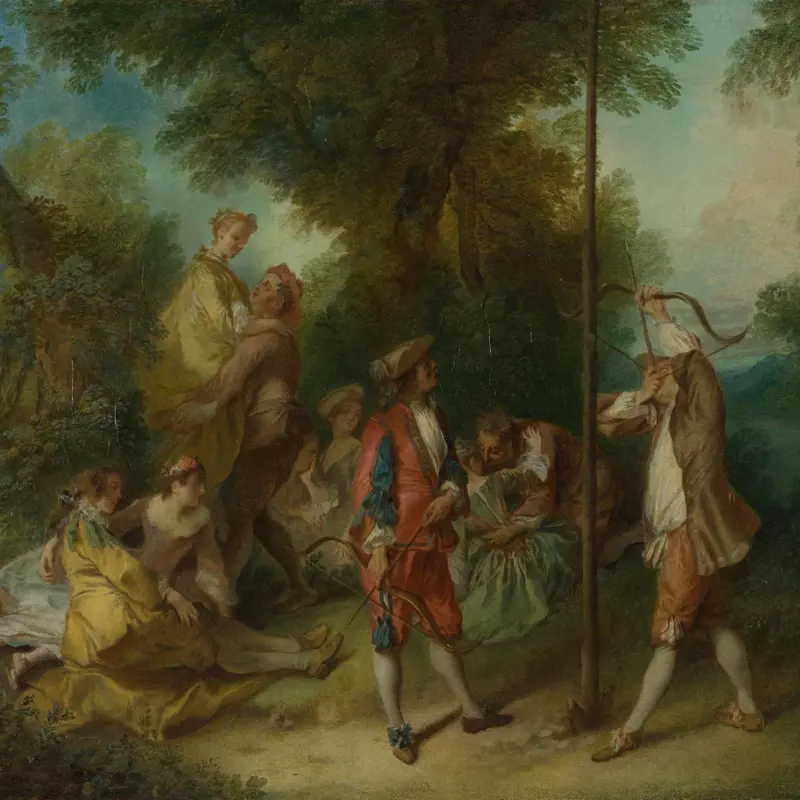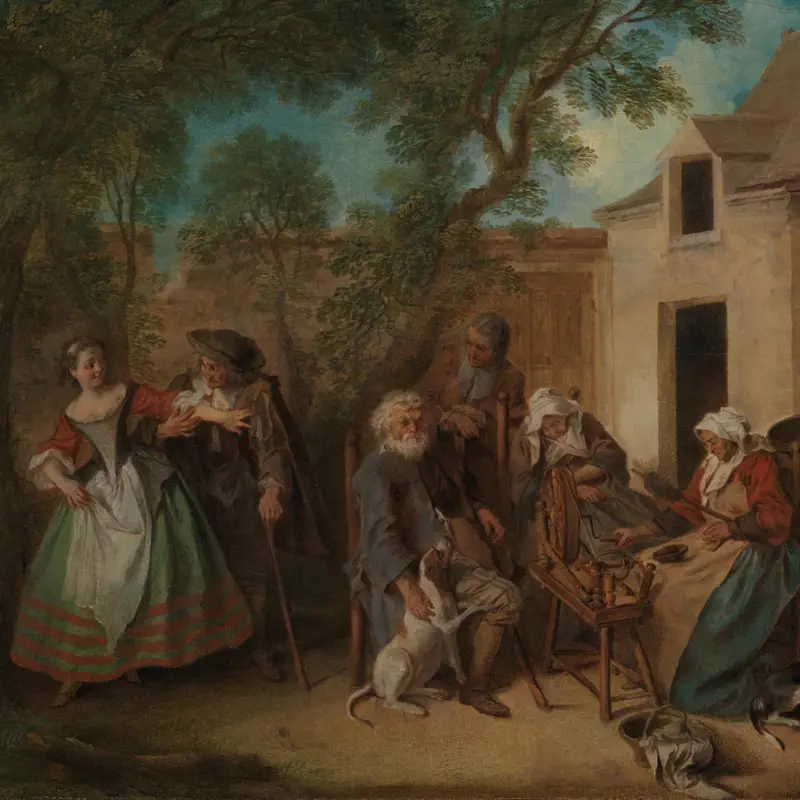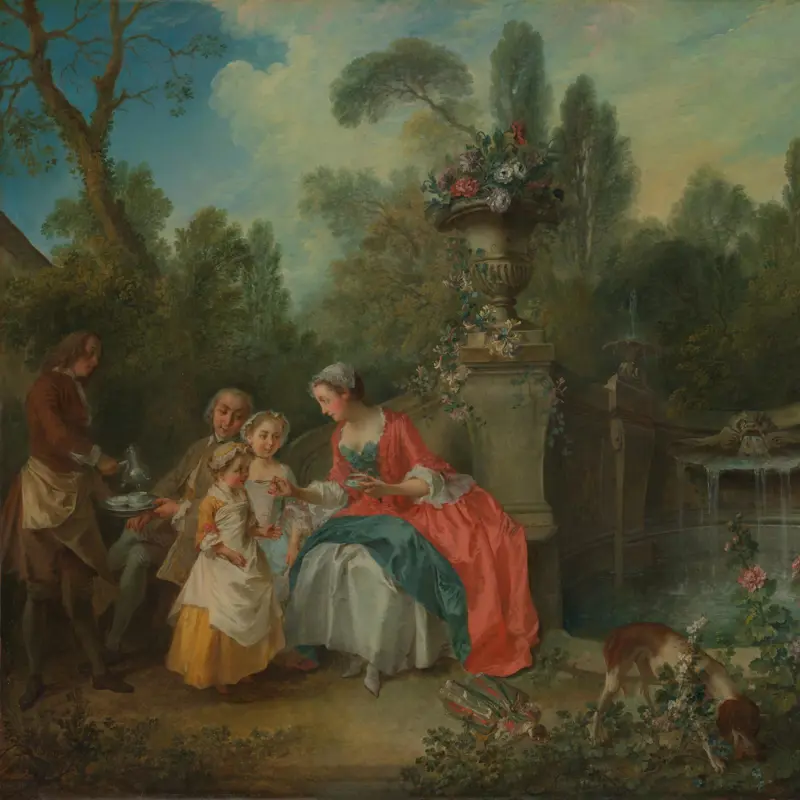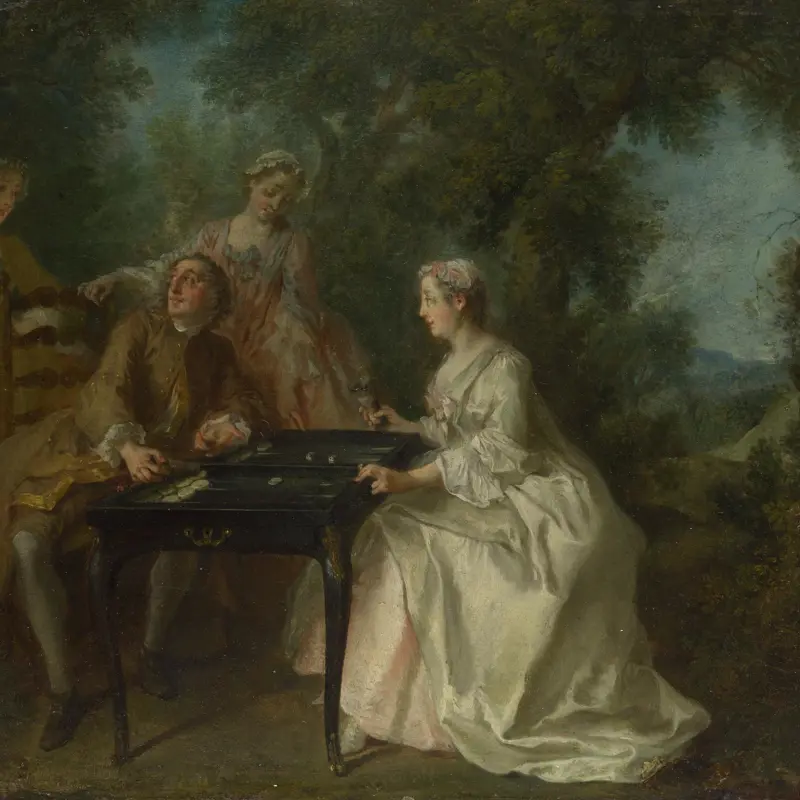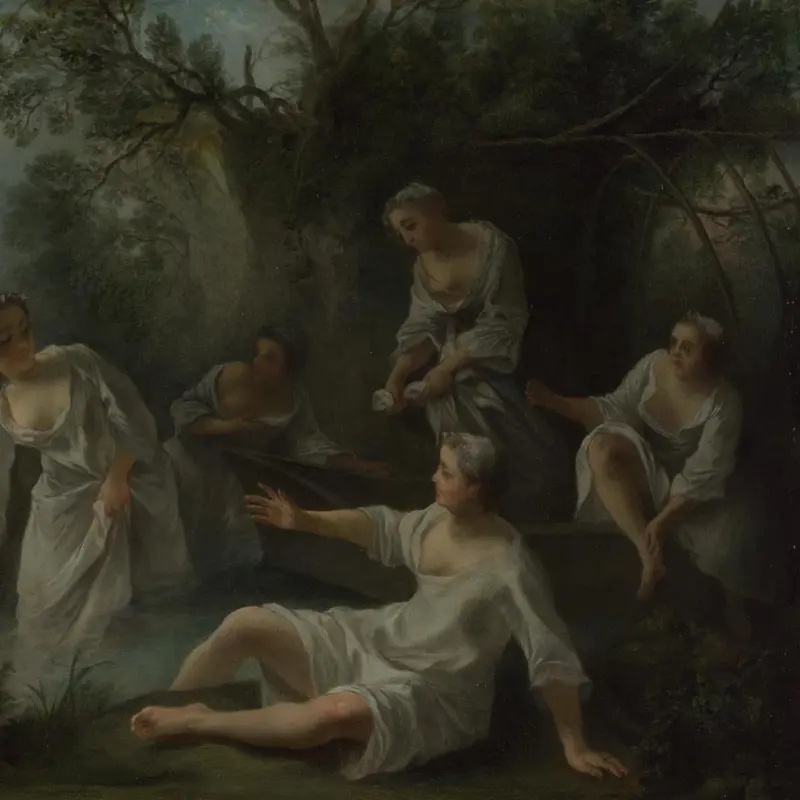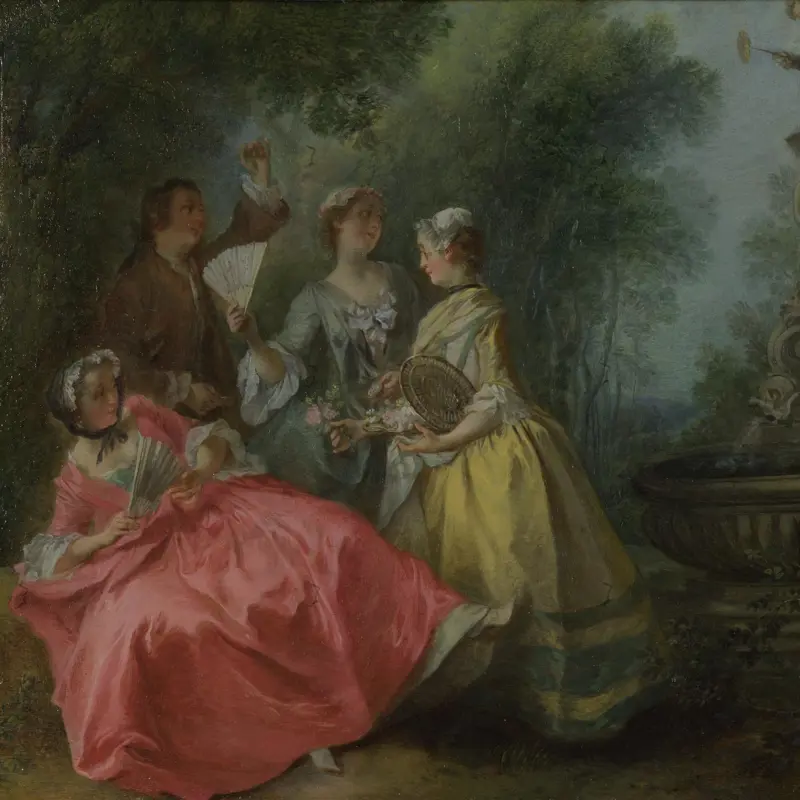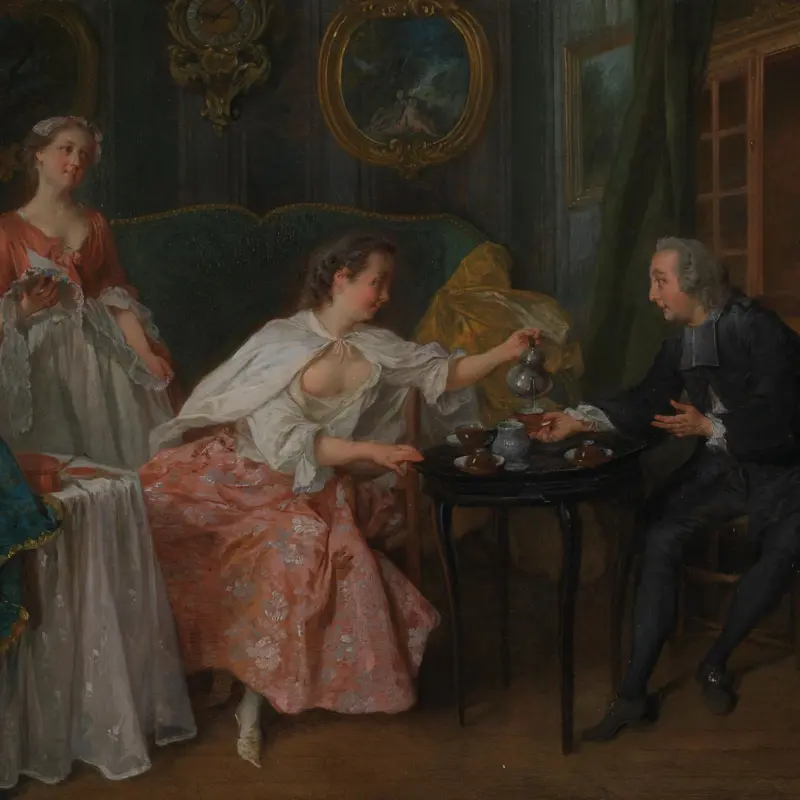Nicolas Lancret, 'The Four Ages of Man: Adolescence', about 1733-4
About the work
Overview
This is the second of Lancret’s series of paintings depicting The Four Ages of Man and represents Adolescence (L'Adolescence).
A young lady stands in the centre of the painting in a grand circular room with tall windows. She admires herself in the mirror held up by a young page while her hair is decorated with bows and flowers. She is so absorbed in her own image that she does not notice her wealthy admirer has been distracted by a pretty young lady adjusting her stocking. He opens his hands as though appealing to her, while she turns and looks up at him with a coquettish glance. The French word for stocking, un bas, in eighteenth-century slang also meant female genitalia. Her revealing dress further emphasises the painting’s subject of sexual desire. The radiating pattern on the floor illustrates the idea that the gaze of a beautiful woman is like the rays of the sun.
Key facts
Details
- Full title
- The Four Ages of Man: Adolescence
- Artist
- Nicolas Lancret
- Artist dates
- 1690 - 1743
- Part of the series
- The Four Ages of Man
- Date made
- About 1733-4
- Medium and support
- Oil on canvas
- Dimensions
- 34.3 × 45.3 cm
- Acquisition credit
- Bequeathed by Lt-Col John Harvey Ollney, 1837
- Inventory number
- NG102
- Location
- Not on display
- Collection
- Main Collection
- Previous owners
Provenance
Additional information
Text extracted from the ‘Provenance’ section of the catalogue entry in Humphrey Wine, ‘National Gallery Catalogues: The Eighteenth Century French Paintings’, London 2018; for further information, see the full catalogue entry.
Bibliography
-
1875E. Bocher, Les graveurs françaises du XVIIIe siècle, Paris 1875
-
1876E. Bocher, Les gravures françaises du XVIIIe siècle, Paris 1876
-
1924G. Wildenstein, Lancret, Paris 1924
-
1946Martin Davies, National Gallery Catalogues: French School, London 1946
-
1957Martin Davies, National Gallery Catalogues: French School, 2nd edn (revised), London 1957
-
1995F. Gétreau, 'Les tableaux et les dessins français du XVIIIe siècle', Gazette des beaux-arts, CXXXVII, 1995, pp. 177-90
-
1997E. Langmuir, Allegory, London 1997
-
2001
C. Baker and T. Henry, The National Gallery: Complete Illustrated Catalogue, London 2001
-
2018Wine, Humphrey, National Gallery Catalogues: The Eighteenth Century French Paintings, London 2018
About this record
If you know more about this work or have spotted an error, please contact us. Please note that exhibition histories are listed from 2009 onwards. Bibliographies may not be complete; more comprehensive information is available in the National Gallery Library.
Images
About the series: The Four Ages of Man
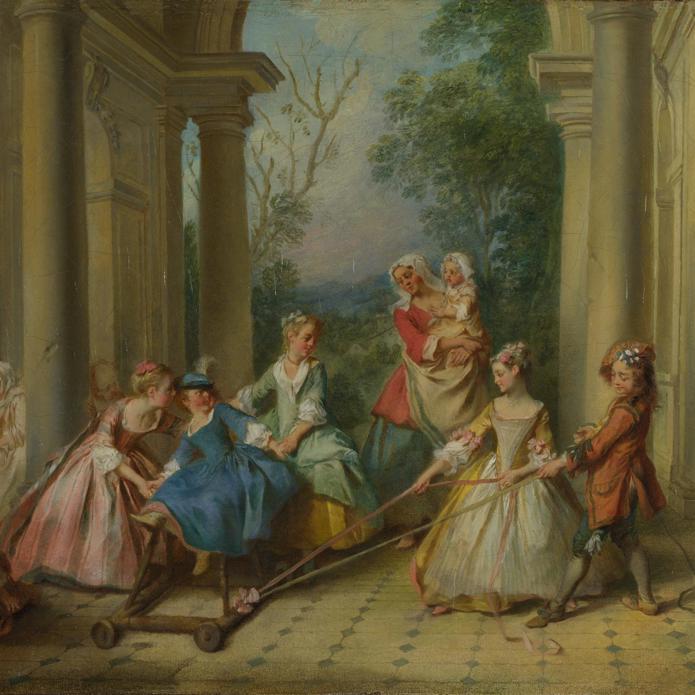
Overview
Lancret treats the traditional subject of The Four Ages of Man as a series of contemporary genre scenes – Childhood, Adolescence, Youth and Old Age.
In Childhood (L'Enfance), a group of wealthy children play boisterous games in an open-air loggia watched by their nurse and governess. In Adolescence (L’Adolescence), a young woman admires herself in a mirror while her hair is decorated with ribbons and flowers. Instead of depicting the third age as a time of maturity and showing a middle-aged married couple, Lancret paints several pairs of lovers in a woody glade, and entitles the picture Youth (La Jeunesse). In Old Age (La Vieillesse), he dispenses with the usual depiction of old people warming themselves indoors before an open fire to take the scene outdoors.
The set was engraved in reverse by Nicolas de Larmessin III in 1735. Most of the numerous painted copies were copied from the prints and are also shown in reverse.

